| Image | Plant | Status | Notes | Events |
|---|---|---|---|---|
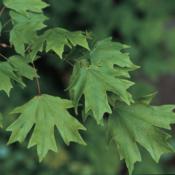 |
Florida Maple (Acer barbatum) |
Have Millers Fork |
Common names: Southern Sugar Maple, Florida Maple Also classified as Acer saccharum subsp. floridanum |
|
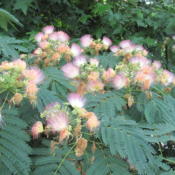 |
Mimosa Tree (Albizia julibrissin) |
Have Millers Fork |
This tree is growing near the creek at Marie's Overlook. | |
 |
Devil's Walking Stick (Aralia spinosa) |
Have Millers Fork |
This naturally occurring stand was discovered while clearing an access point to Millers Fork creek. We refer to this area as "Devil's Cove" thanks to the Devil's Walking Stick. |
|
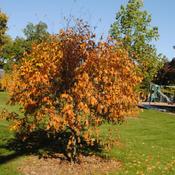 |
American Hornbeam (Carpinus caroliniana) |
Have Millers Fork |
Common names: Musclewood, American Hornbeam | |
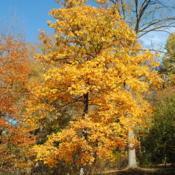 |
Pignut Hickory (Carya glabra) |
Have Lydia Bailey Children's Park Millers Fork Pine Street Park |
The Pignut hickory (Carya glabra) is a large tree that has a tall, but relatively narrow crown. The bark is tight rather than shaggy and in the fall, its color is golden. The nuts produced are bitter tasting. Pignut Hickories were added to Pine Street Park in 2020 by Clinton Canopy, assisted by agriculture students from Clinton High School. This part of a PARD funded upgrade to the park. The trees were obtained from the SC Forestry Commission. |
|
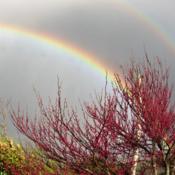 |
Eastern Redbud (Cercis canadensis) |
Have Pine Haven Park Martha Dendy Park Millers Fork Lydia Bailey Children's Park Pine Street Park |
The eastern redbud grows to a height of 20–30' and a spread of 25–35' at maturity. Rosy pink flowers appear in April before the leaves appear. Reddish-purple leaves change to dark green, then to yellow. Appear in the fall. It is native to North America and Canada with cousins in Europe and Asia. It was noted in 1571 by Spaniards who made distinctions between the New World species and their cousins in the Mediterranean region. Centuries later, George Washington reported in his diary on many occasions about the beauty of the tree and spent many hours in his garden transplanting seedlings obtained from the nearby forest. It was chosen as the state tree of Oklahoma in 1937. The early blossoms draw in nectar-seeking insects including several species of early-season butterflies. Northern bobwhite and a few songbirds, such as chickadees will eat the seeds. It can be used for nesting sites and nesting materials, and it also provides shelter for birds and mammals. | |
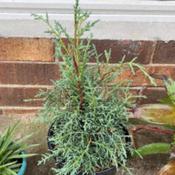 |
Arizona Cypress (Cupressus arizonica var. glabra 'Carolina Sapphire') |
Have Martha Dendy Park Millers Fork |
The Carolina Sapphire Cypress was developed at Clemson University in 1968. It has seedlings that have very lacy foliage of a gorgeous steel-blue color. This tree combines all the toughness of the common Arizona Cypress with a soft appearance and a beautiful color. It is one of the fastest-growing evergreens, and it can grow as much as two feet a year when young. It will quickly reach 20 or 30 feet in height if left unclipped. The foliage is soft and very fine, looking like steely blue lace and smelling like a cross between lemons and mint. | |
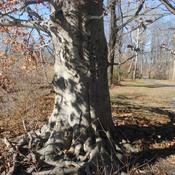 |
American Beech (Fagus grandifolia) |
Have Millers Fork |
||
 |
Carolina Silverbell (Halesia carolina) |
Want Millers Fork |
||
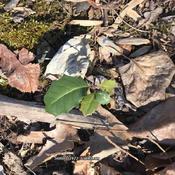 |
American Holly (Ilex opaca) |
Have Calvert Avenue Park Millers Fork Vance Park |
The American holly (Ilex opaca) grows to a height of 40–50' and a spread of 18–40' at maturity. This tree is considered both an evergreen tree and an ornamental tree. It keeps its foliage year-round. The leaves stay green year-round. The American holly tree has been popular since the beginning of American history, having served the Native Americans with wood for many different applications and berries that were used for buttons and barter. It was said to be a favorite of George Washington, and more than a dozen hollies he planted are still evident today. It is also widely known as the basic raw material for Christmas wreaths. The first scientific observation of the American holly tree was recorded in 1744. The foliage of the American holly provides cover for songbirds and mammals, and after frost settles in, the fruit becomes a choice food for grouse, quail, wild turkeys and other songbirds. The flowers are also attractive to bees. | |
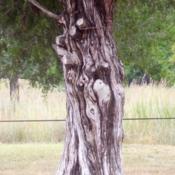 |
Eastern Red Cedar (Juniperus virginiana) |
Have Pine Haven Park Martha Dendy Park Calvert Avenue Park Millers Fork |
The eastern red cedar grows to a height of 40–50' and a spread of 8–20' at maturity. It has a dense pyramid shape with medium green foliage. The eastern red cedar is an ancient tree, dating to aboriginal America where fossil evidence indicates that it covered large portions of the continent. Early explorers took note of the tree. Arthur Barlowe and Phillip Amadus were quoted as saying the trees were "the tallest and reddest cedars in the world" when they arrived at Roanoke Island in 1564. Colonial craftsmen lost no time in using the wood from the eastern red cedar for furniture and fences because it had superior weathering capability and was easy to work with. The wood was a staple of the pencil industry for over a century until supplies became exhausted and the industry switched to more plentiful western cedars. Eastern red cedar twigs and foliage are eaten by bird and mammal browsers, while the fruit is eaten most extensively by cedar waxwings. Evergreen foliage provides nesting and roosting cover for sparrows, robins, mockingbirds, juncos and warblers. | |
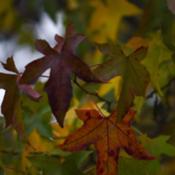 |
American Sweetgum (Liquidambar styraciflua) |
Have Lydia Bailey Children's Park Millers Fork Shirley Jenkins Park |
The American sweetgum (Liquidambar styriciflua) grows to a height of 60–75' and has a spread of 40–50' at maturity. It grows from 13 inches to 24 inches per year. Deep, glossy green star-shaped leaves mark the Sweetgum. The leaves turn yellow-purple-red in the fall and stay on the tree quite late in the season. Its shape is pyramidal, becoming more rounded with age. The Sweetgum tree is native to the southeastern United States and a member of a genus made up of only six species. The others are found only in Asia. The first historical reference to the tree comes from the author and soldier, Don Bernal Diaz del Castillo, who accompanied Cortez in 1519 and was a witness to ceremonies between Cortez and Montezuma, when both partook of a liquid amber extracted from a sweetgum tree. Once commercially popular for soaps, adhesives and pharmaceuticals, today its wood is valuable for fine furniture and interior finishing. Small mammals such as chipmunks, red squirrels and gray squirrels also enjoy the fruits and seeds. American sweetgum seeds are also eaten by eastern goldfinches, purple finches, sparrows, mourning doves, northern bobwhites and wild turkeys. | |
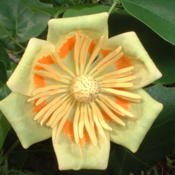 |
Tulip Poplar (Liriodendron tulipifera) |
Have Millers Fork |
||
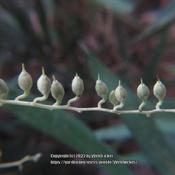 |
Sourwood (Oxydendrum arboreum) |
Want Millers Fork |
||
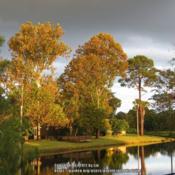 |
American Sycamore (Platanus occidentalis) |
Have Millers Fork |
||
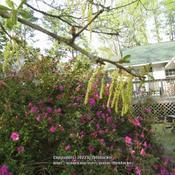 |
Water Oak (Quercus nigra) |
Have Clinton Mill Park Vance Park Pine Street Park Millers Fork |
Water Oak (Quercus nigra) is a native to the central and eastern USA. It is a semi-evergreen tree found in forests, flood plains, and along rivers and streams or in sloped areas with drier soils. In NC, it is found from the coastal plain to the foothills of the mountains. It has a rounded to conical form, a slender straight trunk and may grow 50 to 100 feet tall. The tree has alternate leaves with smooth or bristle-tipped margins. The leaf shape is variable and may have 0 to 5 lobes. In spring, cylindrical, male flowers and female spikes mature. The acorn requires two growing seasons to reach maturity. It is regarded as having weaker wood than most oaks. This tree prefers rich, medium to wet acidic soils in full sun. It is adaptable to other soil types and part shade. Great tree for naturalized areas, as a street tree or a shade tree in large areas. Also useful in wetter sites. |